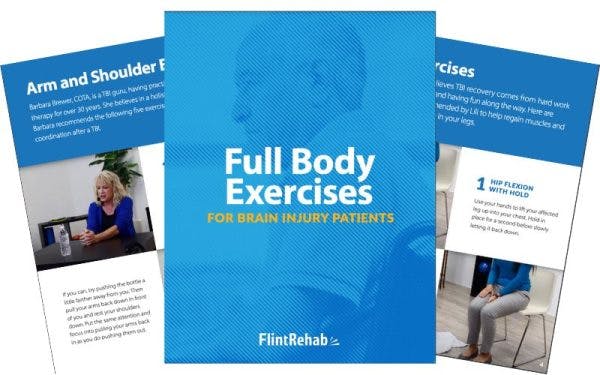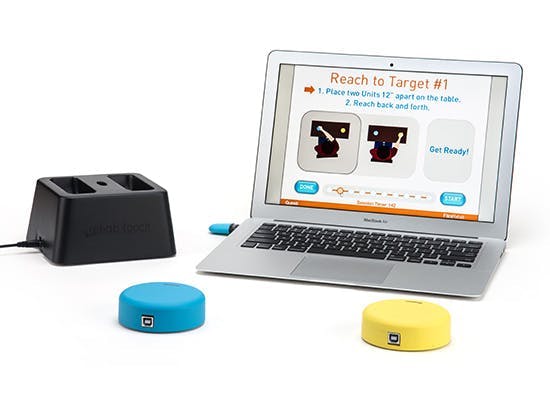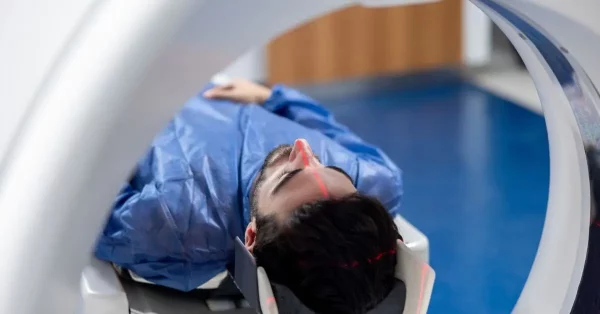Visual agnosia is a condition where the eyes can see clearly, but the brain struggles to recognize what it’s looking at. Someone might see a familiar object—like a phone or a face—but not know what it is. It’s not about poor vision or memory loss; it’s a disconnect in how the brain processes visual information.
In this article, we’ll break down the different types of visual agnosia, what causes it, and how people can manage it with the right support and strategies.
What Is Visual Agnosia?
Imagine looking at a familiar object—a coffee cup, a set of keys, or even a loved one’s face—and not being able to identify what it is, despite seeing it clearly. This perplexing experience is at the core of a condition known as visual agnosia. People with visual agnosia can see objects clearly, but they struggle to identify or name them. This disorder is not related to vision problems, memory loss, or language impairments. Instead, it results from damage to specific areas of the brain responsible for processing visual information.
In the following sections, we’ll look at the different types of visual agnosia, explore their causes and symptoms, and provide tips on how to manage the condition during recovery.
Types of Visual Agnosia
Visual agnosia can show up in different ways, making it hard for people to recognize things, even though they can see them clearly. Each type of visual agnosia affects people differently, which is why it’s important to understand the various forms. Knowing the specific type can help identify what kind of challenges someone might face and how best to support them with the right treatments.
Visual agnosias can be broken into a few main categories:
- General visual agnosia: the inability to recognize known objects by sight
- Selective visual agnosia: the inability to recognize specific types of objects by sight, such as faces or written words
These types can be further broken into:
- Apperceptive visual agnosia: difficulty forming a coherent visual perception. Individuals struggle to recognize shapes, differentiate objects, or copy drawings. This type is often associated with damage to the occipital lobe, where initial visual processing occurs.
- Associative visual agnosia: inability to identify an object, despite intact visual perception. Individuals may be able to describe an object’s features—such as its shape, color, and size—but fail to identify what it is. This form often results from damage to the temporal lobe, where the brain connects visual input with stored knowledge.
Other types of visual agnosia, based on the kinds of recognition difficulties people might experience, include:
1. Prosopagnosia (Face Blindness)
Prosopagnosia is a selective visual agnosia where individuals cannot recognize familiar faces, including their own reflection in severe cases. This condition can be congenital (present from birth) or acquired due to brain injury.
- Apperceptive Prosopagnosia: Difficulty recognizing facial expressions or nonverbal cues.
- Associative Prosopagnosia: Inability to recognize familiar faces, though recognition through voice or other cues remains intact.
2. Topographical Agnosia
People with topographical agnosia cannot recognize familiar places or navigate their environment effectively. This selective visual agnosia, which also includes landmark agnosia and is closely related to environmental agnosia, often occurs alongside damage to the parahippocampal gyrus, which helps process spatial memory and navigation.
3. Akinetopsia
Individuals with akinetopsia can recognize objects but cannot perceive motion. They may see the world as a series of static images.
4. Alexia
Alexia affects the ability to recognize written words. Individuals can see words clearly but cannot read them, although their writing and speaking abilities remain unaffected.
5. Amusia
Amusia, in its visual form, causes an inability to read musical notation, even though auditory processing of music may remain unaffected.
6. Autotopagnosia
Autotopagnosia involves difficulty recognizing body parts, either one’s own or others’. A subtype, finger agnosia, refers to the inability to recognize fingers specifically.
7. Cerebral Achromatopsia
Also known as color agnosia, individuals with achromatopsia can distinguish different colors but cannot identify or name them.
8. Social-Emotional Agnosia
Social-emotional agnosia results in difficulty recognizing nonverbal social cues, such as body language or facial expressions, affecting social interactions.
9. Balint Syndrome
Balint syndrome affects the ability to perceive the visual environment as a whole. People with this condition see only isolated objects without understanding how they relate to each other. One of the three primary characteristics of Balint syndrome is a general visual agnosia known as simultagnosia. This affects the ability to visually perceive multiple objects at once. Other features of Balint syndrome include:
- Optic ataxia: lack of coordination between vision and hand movement when reaching
- Ocular apraxia: difficulty with coordinated voluntary eye movement
10. Simultanagnosia
Simultanagnosia impairs the ability to perceive more than one object at a time. There are two types:
- Dorsal Simultanagnosia: Only one object can be seen at a time, and other objects disappear from perception when not in focus.
- Ventral Simultanagnosia: Multiple objects can be seen simultaneously, but they can only be identified individually, not as part of a whole scene.
11. Form Agnosia
Individuals with form agnosia have trouble recognizing simple shapes. Since objects are often made of multiple shapes put together, this makes it very difficult to identify an object’s entire structure. However, they can identify specific visual features, such as color and motion. This is considered a general apperceptive visual agnosia.
12. Integrative Agnosia
Those with integrative agnosia are able to perceive different components of an object, but may be unable to integrate them together to see the object as a whole.
13. Transformation Agnosia
This general visual agnosia involves the inability to recognize three dimensional objects when viewed from an unusual viewpoint. It may also be referred to as spatial agnosia.
14. Orientation Agnosia
Also called agnosia for object orientation, this involves the inability to recognize which direction an object is oriented, despite still being able to identify the object. For example, although individuals with orientation agnosia may be able to identify a picture of a penguin placed in front of them in any orientation, they may not be able to identify whether the penguin is upside down or right side up. This can be caused by damage to the right parietal lobe.
Causes of Visual Agnosia
Visual agnosia typically results from brain damage that affects the occipital or temporal lobes, but may also result from damage to other areas. Common causes include:
- Stroke: A leading cause due to restricted blood flow causing brain cell death.
- Traumatic Brain Injury (TBI): Head injuries from accidents can damage visual processing areas.
- Neurodegenerative Diseases: Conditions like Alzheimer’s disease can gradually impair visual recognition.
- Infections: Encephalitis and other infections can cause inflammation and damage brain tissue.
- Tumors: Brain tumors pressing on visual processing areas can lead to agnosia.
Symptoms of Visual Agnosia
Symptoms vary based on the type and severity of the condition but may include:
- Difficulty recognizing common objects, even though they can be described in detail
- Inability to recognize familiar faces (prosopagnosia)
- Trouble identifying places or navigating familiar routes
- Problems copying or drawing simple shapes (in apperceptive agnosia)
Diagnosis of Visual Agnosia
Diagnosing visual agnosia involves a combination of clinical evaluation and diagnostic tests:
1. Neurological Examination
A doctor assesses visual acuity, cognitive function, and the ability to recognize objects, faces, and shapes.
2. Imaging Tests
MRI or CT scans help identify brain damage, lesions, or abnormalities in areas related to visual processing.
3. Neuropsychological Testing
Specialized assessments evaluate visual perception, memory, and recognition abilities to pinpoint the type of agnosia.
Treatment and Management of Visual Agnosia
There is no cure for visual agnosia, but treatment focuses on managing symptoms, enhancing visual processing, and improving daily functioning. A comprehensive approach often involves a combination of therapies, assistive tools, and support strategies tailored to the individual’s specific needs.
1. Occupational Therapy
Occupational therapy plays a key role in helping individuals with visual agnosia adapt to daily life challenges. With consistent support, occupational therapy can significantly enhance independence and confidence in performing everyday tasks.
Techniques include:
- Using Multisensory Cues: Incorporating touch, sound, and contextual information to assist object recognition. For example, identifying an object by its texture or associated sound.
- Environmental Modifications: Organizing living spaces with labeled items, consistent layouts, and visual cues to reduce confusion. Color-coding and clear labeling can aid recognition.
- Task Simplification: Breaking tasks into smaller, manageable steps to enhance understanding, helping individuals focus on one component at a time to build familiarity.
With consistent occupational therapy and focus on practical skills, individuals can regain a sense of control and autonomy in their daily routines.
2. Cognitive Rehabilitation
Cognitive rehabilitation focuses on strengthening the brain’s ability to process visual information more effectively. The goal is to help individuals rebuild connections in the brain that support visual processing and recognition.
This may involve:
- Visual Perception Training: Exercises designed to strengthen the ability to recognize shapes, patterns, and objects. This could include matching games, puzzles, and drawing tasks.
- Memory Association Techniques: Teaching individuals to link visual stimuli with familiar memories or verbal cues, creating strong mental associations to support recognition.
- Attention Enhancement Strategies: Improving focus and concentration to aid in visual interpretation. Mindfulness exercises and concentration drills can be effective.
Over time, these cognitive exercises can lead to noticeable improvements in visual recognition and daily functioning.
3. Assistive Technologies and Supportive Aids
Modern technology offers several tools that can support people with visual agnosia in recognizing objects and navigating their environment. When used effectively, these tools can bridge the gap between visual limitations and daily life activities.
Some examples of technological aids can significantly enhance the quality of life for individuals with visual agnosia include:
- Speech-to-Text Applications: Tools that convert written text to spoken words, assisting those with alexia, enabling them to “hear” the written content.
- Augmented Reality Devices: Wearable technology that overlays information to aid recognition of objects and faces, offering real-time support in identifying surroundings.
- Customized Visual Aids: High-contrast images, color-coded items, tactile markers, and personalized flashcards to support visual identification and reinforce learning.
Continuous advancements in technology also offer new possibilities for enhancing visual recognition and independence.
4. Psychotherapy and Emotional Support
Addressing the emotional impact of visual agnosia is crucial for overall well-being, making psychotherapy an important part of treatment. Emotional resilience gained through therapy can greatly improve a person’s ability to manage the condition and maintain healthy relationships.
Examples of psychotherapy treatments that can help individuals cope with frustration, anxiety, and social difficulties include:
- Cognitive-Behavioral Therapy (CBT): Assists in managing negative emotions, fostering adaptive coping mechanisms.
- Support Groups: Provide a platform to share experiences and strategies, reducing feelings of isolation and promoting community support.
- Family Counseling: Helps relatives understand the condition and learn how to provide effective emotional support.
Addressing the psychological impact is as important as treating the cognitive symptoms, making this an important part of management and treatment.
5. Addressing Underlying Conditions
Managing the health issues that cause or contribute to visual agnosia is essential for effective treatment. Addressing these root causes can sometimes reduce the severity of visual agnosia symptoms and improve overall neurological health.
Managing the root cause of visual agnosia may include:
- Medical Treatment: Addressing conditions like strokes, infections, or tumors through medication, surgery, or therapy to prevent further damage.
- Neuroprotective Interventions: Strategies to slow the progression of neurodegenerative diseases, such as Alzheimer’s, including medication, cognitive exercises, and lifestyle changes.
- Rehabilitation Programs: Comprehensive rehabilitation plans to support recovery after brain injuries or strokes, involving a multidisciplinary team.
Early intervention and ongoing medical care are key to preventing further complications and optimizing recovery.
6. Family and Caregiver Involvement
Support from family members and caregivers can greatly improve the quality of life for individuals with visual agnosia. Their involvement fosters a nurturing environment where individuals feel understood, supported, and empowered.
Training and education for family members and caregivers can include:
- Communication Techniques: Using clear, descriptive language and non-visual cues, such as verbal descriptions or gestures, to aid understanding.
- Patience and Understanding: Recognizing the individual’s challenges and offering encouragement without frustration, creating a positive and supportive atmosphere.
- Structured Routines: Establishing consistent daily routines to minimize confusion and promote a sense of security.
Taking the time to understand the difficulties a loved one may be going through can not only improve their quality of life but also your ability to care for them. Many therapists provide personalized family and caregiver training throughout the individual’s recovery to optimize their ability to function in their home environment.
Visual Agnosia Final Thoughts
While visual agnosia undoubtedly presents challenges, early diagnosis, tailored therapy, and supportive strategies can significantly improve the quality of life for those affected. If you or someone you know experiences symptoms of visual agnosia, consulting a healthcare professional for evaluation and guidance is essential.
Understanding the condition is the first step toward managing its impact. And with the right support, individuals can find new ways to adapt and maintain a fulfilling life.
Did you know there are different types of agnosia other than just visual? Check out our recent article to learn more about the different types of agnosia.









